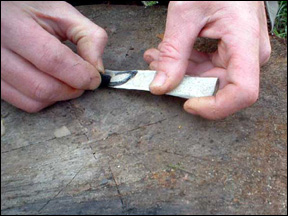
Fish is a fantastic source of protein and the seas and inland
waters have always been harvested by mankind. When living in the
wilds, we can avail ourselves of this resource by using the many
fishing techniques that are available, eg netting, trapping, spearing
and angling.
Hooks can be fashioned from many different materials that are
available in the wilds and can be made in various shapes and sizes
to suit specific fish. This is but one way of many ways:

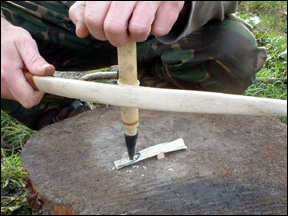
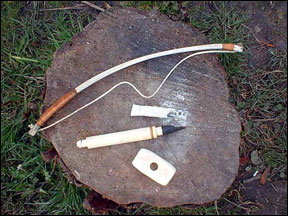
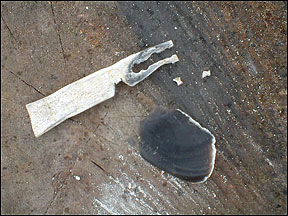
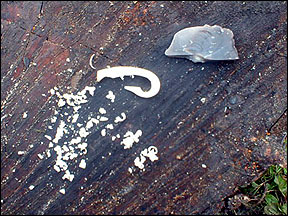
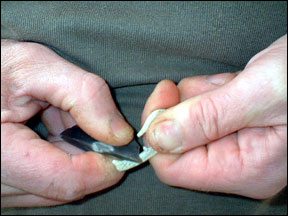
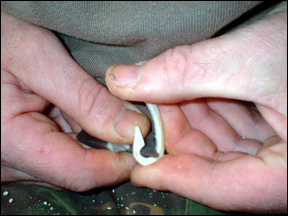
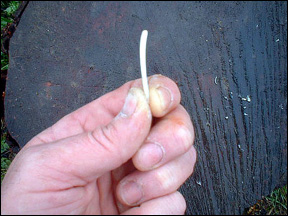
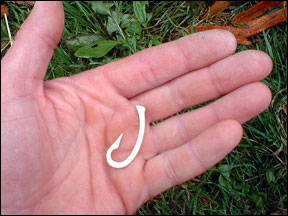
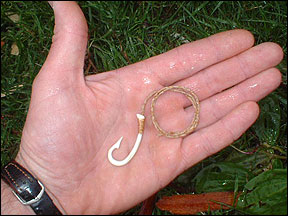
Email your comments to "Patrick McGlinchey" at survivalschool@backwoods.wanadoo.co.uk
Backwoods Survival School
Tel: 0141 641 2055
www.backwoodsurvival.co.uk
We hope the information on the PrimitiveWays website is both instructional and enjoyable. Understand that no warranty or guarantee is included. We expect adults to act responsibly and children to be supervised by a responsible adult. If you use the information on this site to create your own projects or if you try techniques described on PrimitiveWays, behave in accordance with applicable laws, and think about the sustainability of natural resources. Using tools or techniques described on PrimitiveWays can be dangerous with exposure to heavy, sharp or pointed objects, fire, stone tools and hazards present in outdoor settings. Without proper care and caution, or if done incorrectly, there is a risk of property damage, personal injury or even death. So, be advised: Anyone using any information provided on the PrimitiveWays website assumes responsibility for using proper care and caution to protect property, the life, health and safety of himself or herself and all others. He or she expressly assumes all risk of harm or damage to all persons or property proximately caused by the use of this information.
© PrimitiveWays 2013